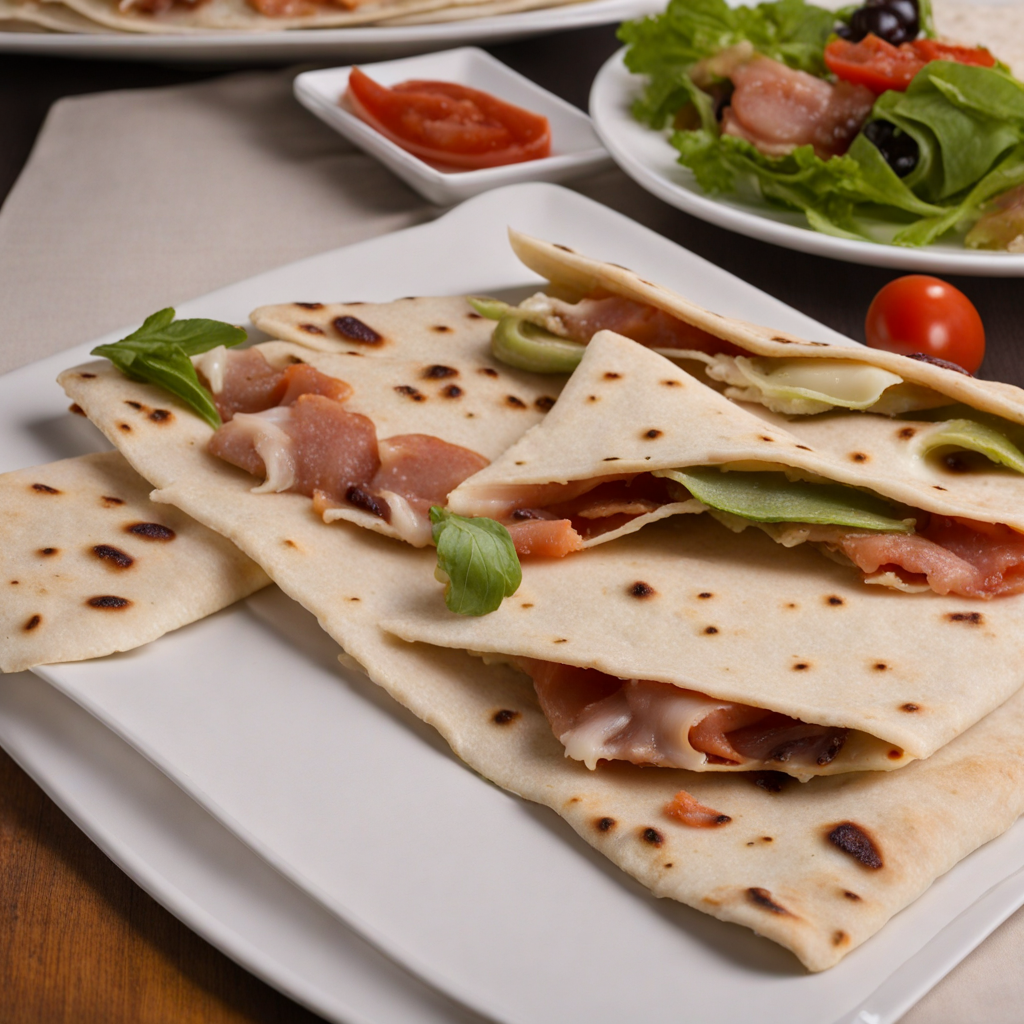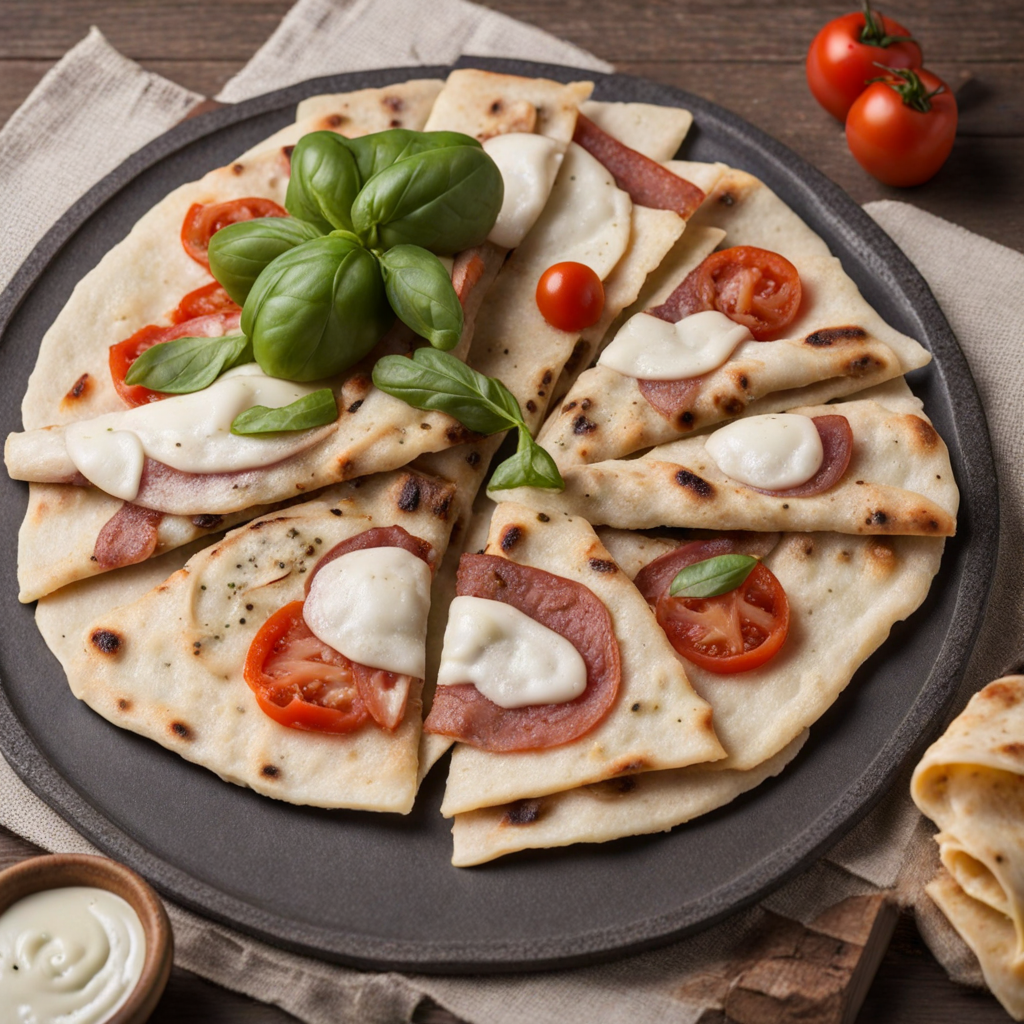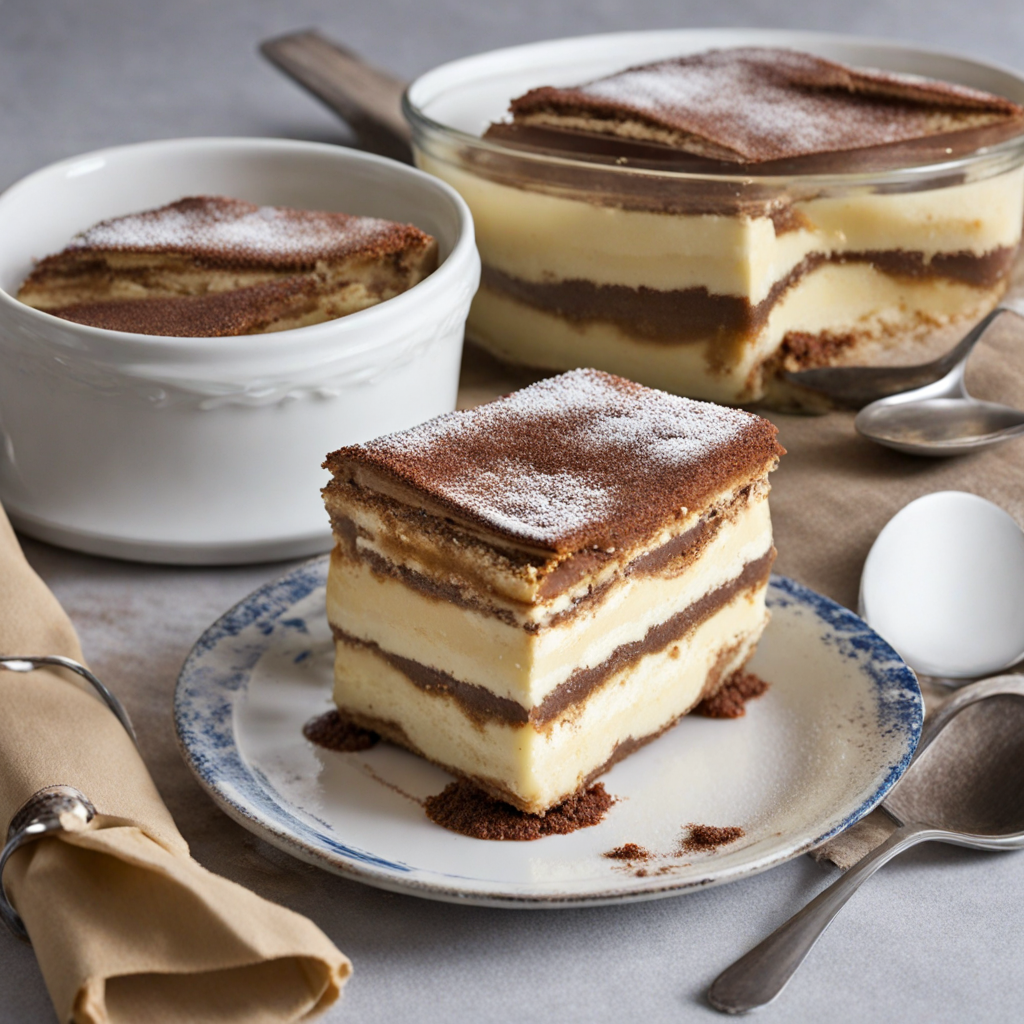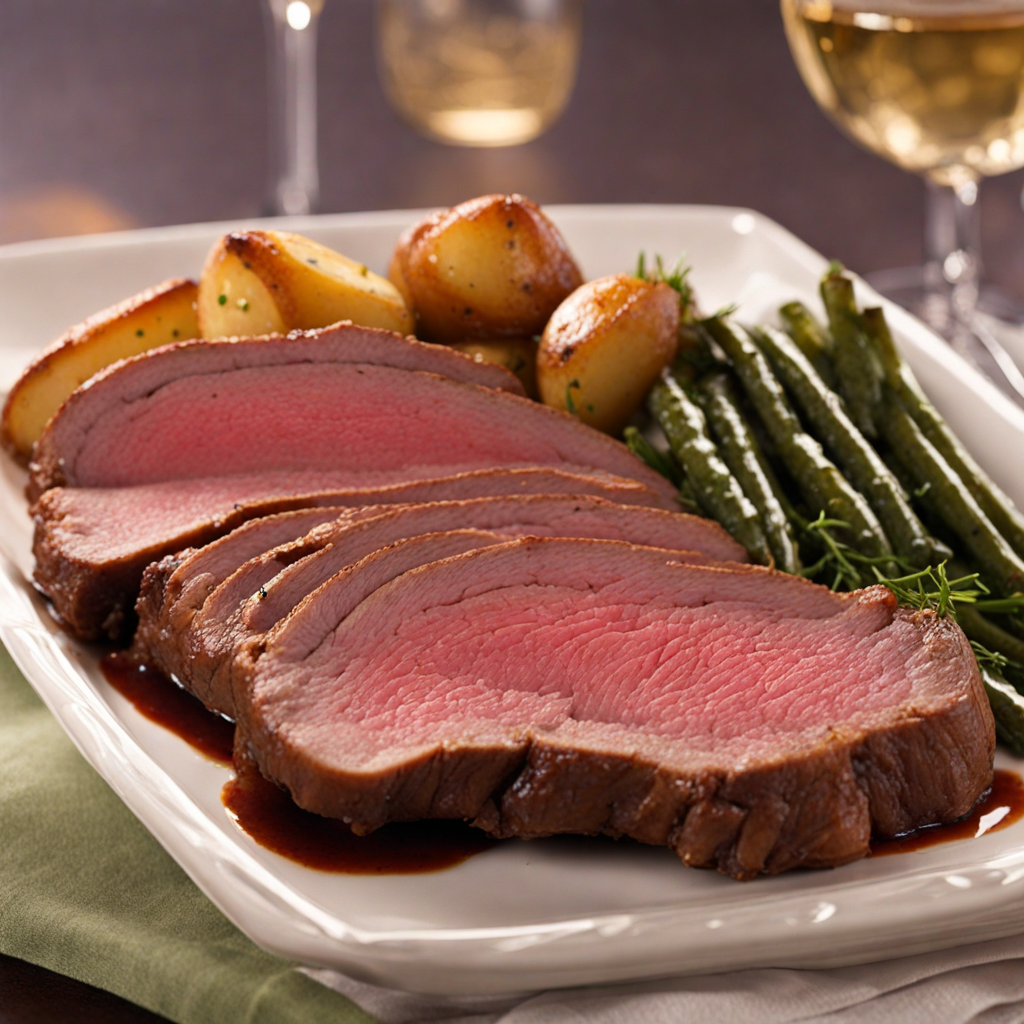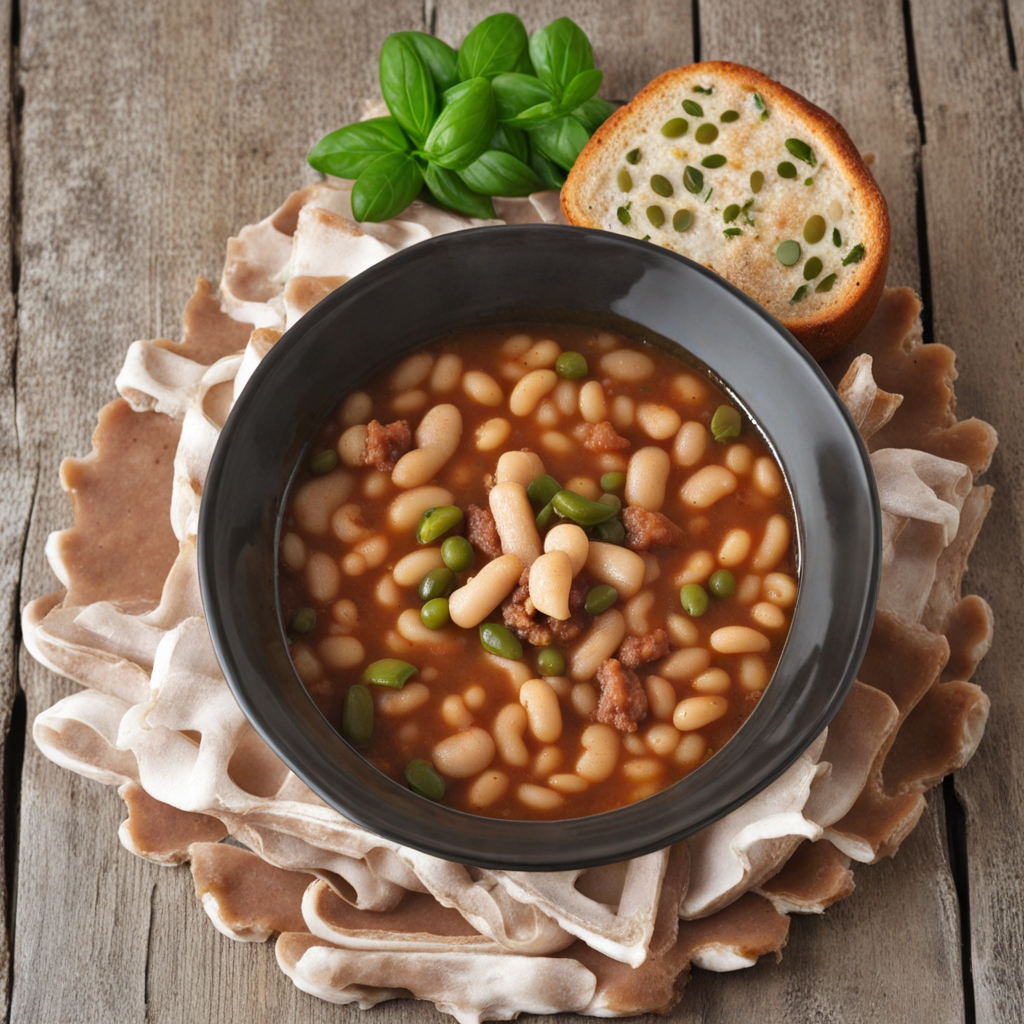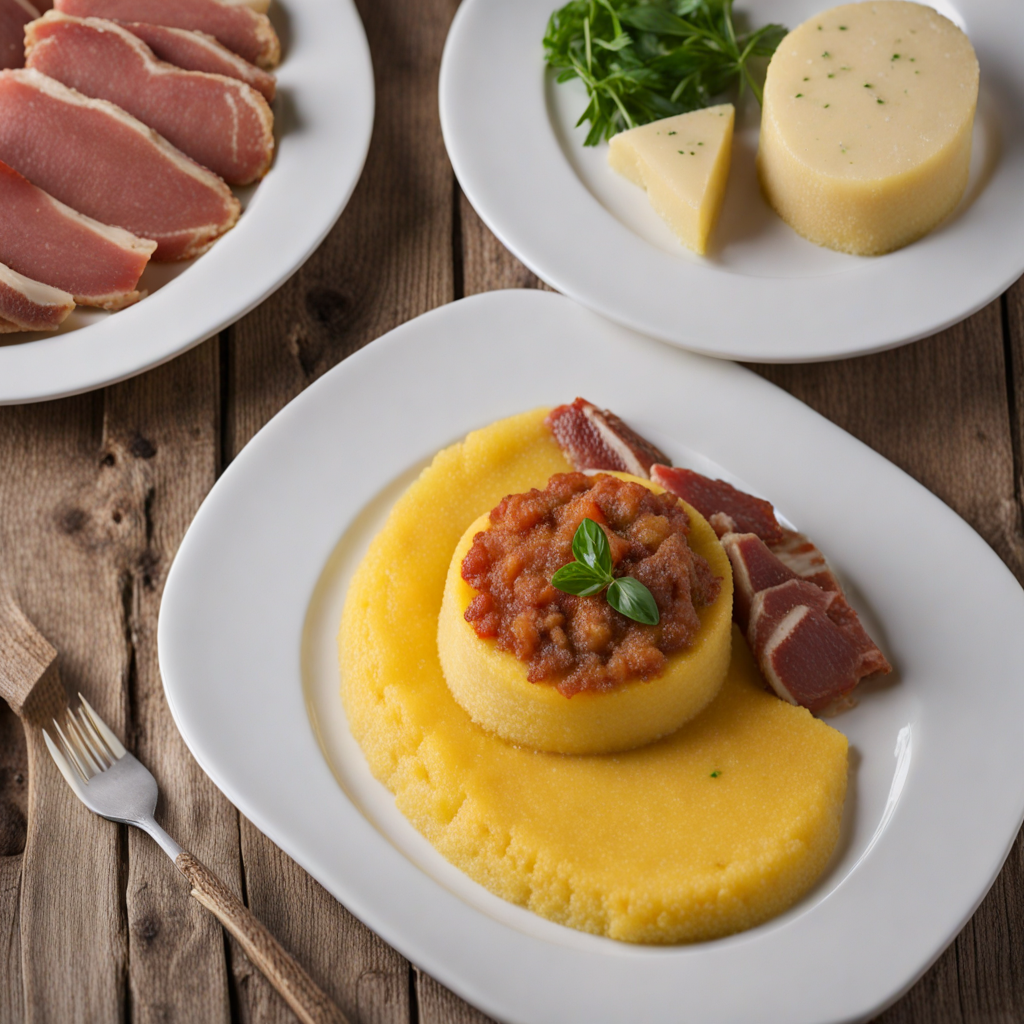La Piada
La Piada, a traditional flatbread from the small yet charming Republic of San Marino, offers a unique culinary experience that delights the senses. This simple yet delicious creation is made primarily from flour, water, salt, and lard, resulting in a soft and pliable dough that is rolled out into thin rounds and cooked on a hot griddle. The result is a slightly chewy exterior with a warm, fluffy interior, perfect for wrapping around a variety of fillings. The aroma of freshly cooked Piada is irresistible, inviting you to savor its delightful simplicity. The versatility of La Piada is one of its most appealing features. It can be filled with a wide range of ingredients, from savory to sweet. Common fillings include cured meats like prosciutto and salami, creamy cheeses such as squacquerone, and fresh vegetables, all of which create a harmonious blend of flavors. For those with a sweet tooth, La Piada can also be filled with Nutella or seasonal fruits, offering a delightful contrast to its savory counterparts. This adaptability makes it a popular choice for both casual meals and festive occasions. Enjoying La Piada is not just about the food; it’s an experience that brings people together, often shared in a relaxed setting among friends and family. Whether you indulge in it at a bustling market or a quaint local eatery, each bite transports you to the heart of San Marino’s culinary traditions. With its rich flavors and comforting texture, La Piada invites you to discover the warmth and hospitality of this enchanting microstate, making it a must-try for any adventurous food lover.
How It Became This Dish
La Piada: A Culinary Legacy of San Marino #### Origins: The Birth of Piada La Piada, often simply referred to as "piada" or "piadina," is an emblematic flatbread that hails from the picturesque microstate of San Marino, nestled atop the Apennine Mountains in Italy. Its origins can be traced back to ancient times, with historical accounts suggesting that the earliest forms of piada were made by the Etruscans, who inhabited the region long before the establishment of Rome. The Etruscans were known for their agricultural practices, and it is believed that they utilized locally sourced grains to create a simple, unleavened bread that would serve as a staple in their diet. The first written references to piada appear in the 13th century, specifically in a document from the town of Rimini, which borders San Marino. The term "piada" itself is derived from the Latin word "peda," meaning "bread." As trade routes expanded and cultural exchanges flourished, piada spread beyond its humble origins, becoming a beloved food across the Romagna region. #### Cultural Significance: More Than Just Food La Piada is not merely a culinary delight; it is a symbol of regional identity and cultural heritage. For the people of San Marino, piada represents a connection to the past and the agricultural roots of their ancestors. Traditionally, piadas were prepared by women, often as part of communal gatherings, where families would come together to share stories and food. The act of making piada was not just about sustenance; it was a ritual that fostered community bonds. In San Marino, piada is often served with a variety of fillings, reflecting the local agricultural bounty. Common fillings include cured meats such as prosciutto, salami, and mortadella, as well as cheeses like squacquerone, a creamy cheese unique to the region. Vegetables, such as arugula and tomatoes, are also popular additions, offering a fresh contrast to the rich flavors of the meats and cheeses. The versatility of piada allows it to be enjoyed in numerous ways, from a simple snack to a hearty meal, making it an integral part of every Sanmarinese household. #### Development Over Time: From Tradition to Modernity As the centuries progressed, piada evolved from its rustic origins into a dish that still retains its traditional essence while adapting to contemporary tastes. The mid-20th century marked a pivotal moment in the history of piada, as San Marino began to embrace tourism. The influx of visitors brought new culinary influences, as well as a growing appreciation for local food traditions. In response to this shift, piada makers began to experiment with different ingredients and fillings, introducing innovations that appealed to a broader audience. Traditional piada, which is typically made with flour, water, salt, and lard, started to incorporate alternative flours such as whole wheat and even gluten-free options, catering to health-conscious consumers. This adaptability ensured that piada remained relevant in an ever-changing culinary landscape. Moreover, restaurants and food stalls began to pop up across San Marino, offering piada as a street food option. This helped to elevate piada from a simple home-cooked dish to a culinary icon that tourists and locals alike could enjoy on the go. The rise of food festivals and markets further solidified piada’s place in the gastronomic scene, with chefs competing to create the most innovative and delicious variations. #### A Taste of Tradition: The Making of La Piada The traditional preparation of piada is a labor of love that has been passed down through generations. The dough is made by mixing flour, water, salt, and lard, which gives the flatbread its characteristic richness and flavor. The ingredients are kneaded together until a smooth dough forms, and then it is left to rest for a short time. This resting period allows the dough to relax, making it easier to roll out. Once the dough is ready, it is divided into small portions and rolled out into thin discs. Traditionally, piadas are cooked on a terracotta dish called a "testo" or on a cast-iron skillet, which imparts a unique flavor to the bread. The cooking process is quick, usually taking only a few minutes on each side, resulting in a soft, slightly chewy texture with a hint of char. The true beauty of piada lies in its versatility. Once cooked, it can be filled with a myriad of ingredients. Traditional fillings include a combination of cured meats, cheeses, and fresh greens, but the creative possibilities are endless. Modern interpretations of piada see it paired with gourmet ingredients such as grilled vegetables, pesto, and even seafood, showcasing its adaptability to evolving culinary trends. #### Piada Today: A Culinary Emblem Today, la piada is more than just a food item; it has become a cultural emblem of San Marino, representing the rich agricultural heritage and the communal spirit of the region. The Sanmarinese people take great pride in their culinary traditions, and piada remains a centerpiece of local celebrations, festivals, and family gatherings. In recent years, efforts to promote and preserve this traditional dish have intensified. The establishment of the "Associazione della Piadina Romagnola," an organization dedicated to safeguarding the authentic preparation of piada, has played a crucial role in educating both locals and visitors about its significance. This organization advocates for the use of high-quality, locally sourced ingredients, ensuring that the traditional flavors of piada are maintained while encouraging innovation. Moreover, the increasing interest in food tourism has spotlighted piada on the international stage. Culinary tours and workshops centered around piada-making have attracted food enthusiasts from around the globe, eager to learn about this cherished dish and its place in San Marino's cultural heritage. #### Conclusion: A Slice of San Marino In conclusion, la piada is not merely a flatbread; it is a testament to the resilience of tradition in the face of modernity. As it continues to evolve, piada remains a delicious reminder of San Marino's rich history, agricultural abundance, and communal ties. Whether enjoyed in a bustling market stall or around a family table, piada embodies the spirit of San Marino, inviting all who taste it to partake in a culinary journey that transcends time and borders. So, the next time you find yourself in San Marino, don't miss the chance to savor a slice of this storied flatbread—a true taste of history and heritage.
You may like
Discover local flavors from San Marino


